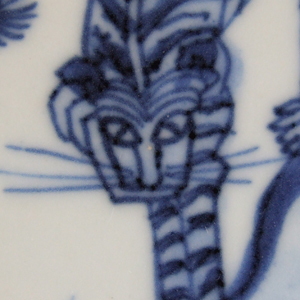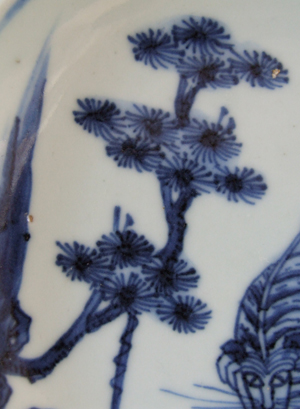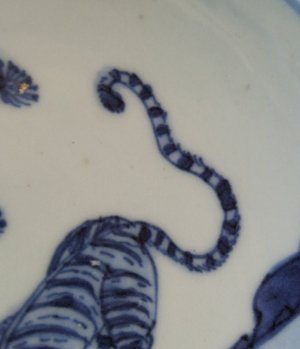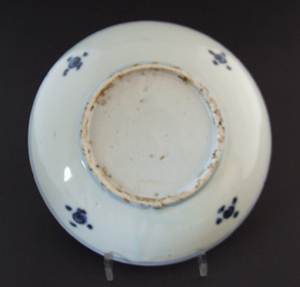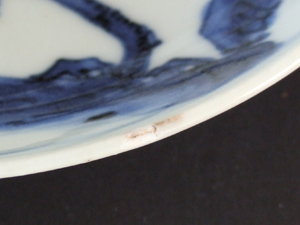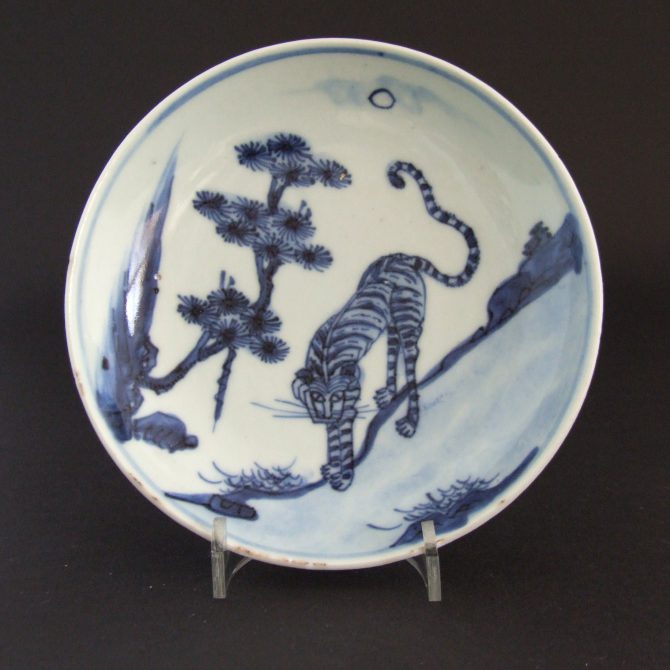
TIANQI or CHONGZHEN c.1625 – 1635 Transitional Porcelain
A Ming Blue and White Porcelain Dish Decorated with a Tiger, Late Tianqi or Chongzhen c.1625-1635. The Tiger is Painted on a Step Incline with it`s Body Arched on Infeasibly Straight Legs. The Moon is Above with a Pine Tree Growing from the Rocks on the Left.
SOLD
- Condition
- In very good condition, minor fritting to the rim.
- Size
- Diameter : 14.5 cm (5 1/2 inches)
- Provenance
- N/A
- Stock number
- 23892
- References
- A similar Ming blue and white Tiger dish is illustrated in : The Peony Pavilion Collection : Chinese Tea Ceramics for Japan (c.1580-1650). Christie`s London 12th June 1989, lot 241. For a set of five Ming blue and white dishes of this design dated to c.1625-1635 see : Trade Taste and Transformation, Jingdezhen Porcelain for Japan, 1620-1645 (Julia B.Curtis, China Institute Gallery, New York 2006. ISBN 10: 0-9774054-0-0) page 79, plate 56 a-e. A further Ming blue and white Tiger dish, but depicted differently, is illustrated in : Exhibition of Transitional Wares for the Japanese and Domestic Markets, S.Marchant & Son, 11th - 30th June 1989, page 23, item 23.
Information
The Peony Pavilion Collection catalogues notes on this design (see references below) are of interest, "The tiger design is popular for tea ceremony use when the guest of honour is a military man ; it suggests warlord with taste, with a powerful and aggressive character. This plate would probably have been displayed rather than used."
Ming Porcelain for Japan :
During the late Ming Period the Chinese made a large among of porcelain for the Japanese market, it was made from the Wanli period (1573-1620) and ended in the Chongzhen period (1628-1644), the main period of production being the 1620`2 and 1630`s. The porcelain objects produced were made especially for the Japanese market, both the shapes and the designs were tailored to Japanese taste, the production process too allowed for Japanese aesthetics to be included in the finished object. Its seams firing faults were added, repaired tears in the leather-hard body were too frequent to not, in some cases, be deliberate. These imperfections as well as the fritting Mushikui (insect-nibbled) rims and kiln grit on the footrims all added to the Japanese aesthetic. The shapes created were often expressly made for the Japanese tea ceremony meal, the Kaiseki, small dishes for serving food at the tea ceremony are the most commonly encountered form. Designs, presumably taken from Japanese drawings sent to China, are very varied, often using large amount of the white porcelain contrasting well with the asymmetry of the design.
